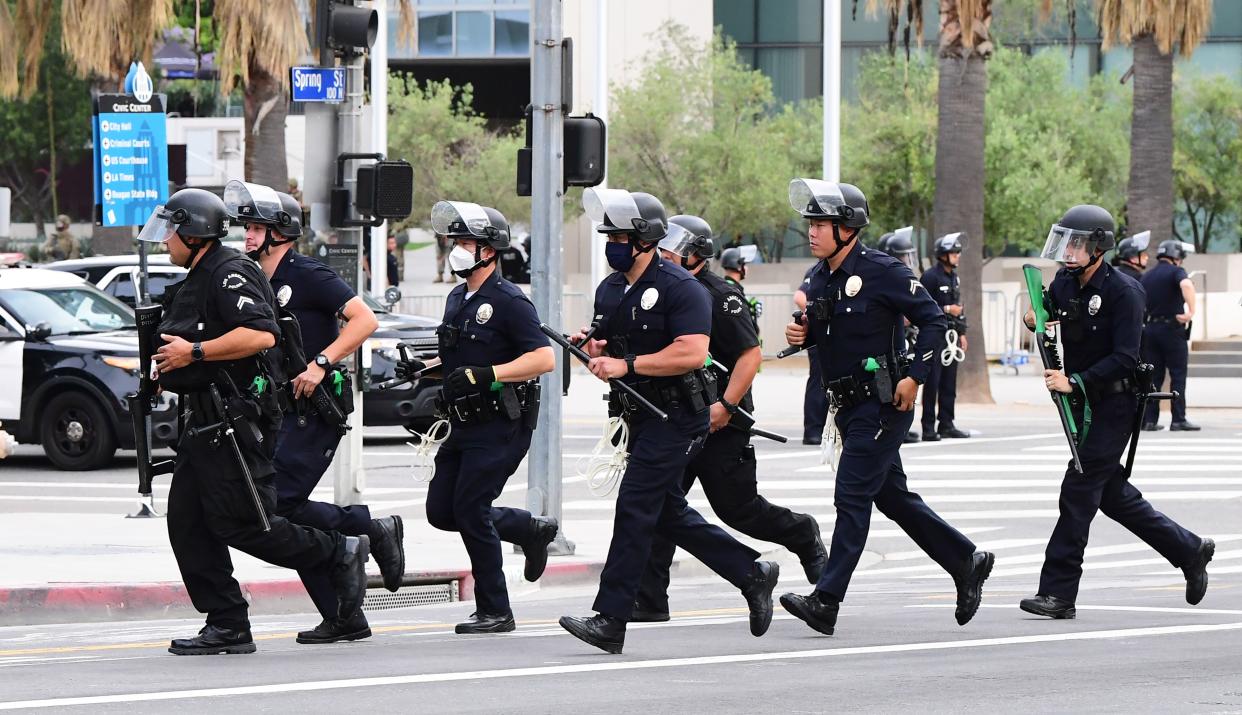Protesters are being injured by rubber bullets — here's what to do if you get shot

In national protests over the death of George Floyd, an unarmed man who died after being restrained by a Minneapolis police officer, deputies have deployed tear gas, pepper spray, and rubber bullets — ammunition covered in rubber or plastic — to disperse activists and reporters, according to the New York Times and first-hand accounts on social media.
Spencer Coursen, a threat management expert and founder of Coursen Security Group, tells Yahoo Life that unlike full metal jacket and hollow point bullets (which penetrate the body and fragment without an exit wound, respectively), rubber bullets are classified as “non-lethal” ammunition. “However, that’s a misnomer because they’re essentially bullets,” he says. “The rubber just reduces velocity so the impact is less traumatic.”
According to the former Special Deputy United States Marshall, police officers are trained to use firearms only in life-or-death situations, not to injure people or neutralize emergencies. “If police make the decision to shoot, it’s to save the life of themselves or others,” Coursen tells Yahoo Life. He adds that officers usually aim for the chest to cause the most bodily harm, while rubber bullets are intended to hit a person’s lower extremities.
That psychologically combined with inadequate weapon training programs, beyond what’s taught in police academies, make rubber bullets potentially serious weapons, says Coursen. In a recent BMJ Open review of injury data on 1,984 people, 53 died from their injuries and 300 were permanently disabled.
“We find that these projectiles have caused significant morbidity and mortality during the past 27 years, much of it from penetrative injuries and head, neck and torso trauma,” wrote the study authors. “Given their inherent inaccuracy, potential for misuse and associated health consequences of severe injury, disability and death, [kinetic impact projectiles] do not appear to be appropriate weapons for use in crowd-control settings. There is an urgent need to establish international guidelines on the use of crowd-control weapons to prevent unnecessary injuries and deaths.”
Jeffrey Goodloe, MD., board member of the American College of Emergency Physicians, tells Yahoo Life that injury severity from a rubber bullet depends on distance and force. “The second it’s fired, a projectile loses speed due to gravity and resistance,” he explains, adding that a closer-range shot causes more damage. “It also matters whether a person is directly hit or if the bullet ricochets off the ground, which absorbs some of the impact.”
Sometimes rubber bullets cause manageable injuries like contusions, abrasions or scrapes, which are generally treatable with ice (frozen food like blueberries mold well to the wound), but injuries to the eye and chest or deeper cuts require immediate medical attention.
However, not all emergency rooms have on-staff ophthalmologists to treat eye injuries, notes Goodloe. “People may want to call ahead to make sure the hospital has appropriate resources,” he says. “Otherwise, an advantage of calling 9-1-1 is that EMTs are savvy about where to take patients.” According to Goodloe, shatter-proof goggles protect better than glasses which could cut the eye even more.
Goodloe says that protestors should not hesitate seeking help, regardless of how they got injured. “There is no discussion [among doctors] as to who is ‘right or wrong’ in these protests,” he tells Yahoo Life. “A doctor’s role is to treat patients, not judge them.”
However, if people exercise their right to protest, they should wear a mask to prevent the spread of COVID-19, says Goodloe adding, “The coronavirus has not gone away.”
Read more from Yahoo Life:
Want daily wellness, lifestyle and parenting news delivered to your inbox? Sign up here for Yahoo Life’s newsletter.

